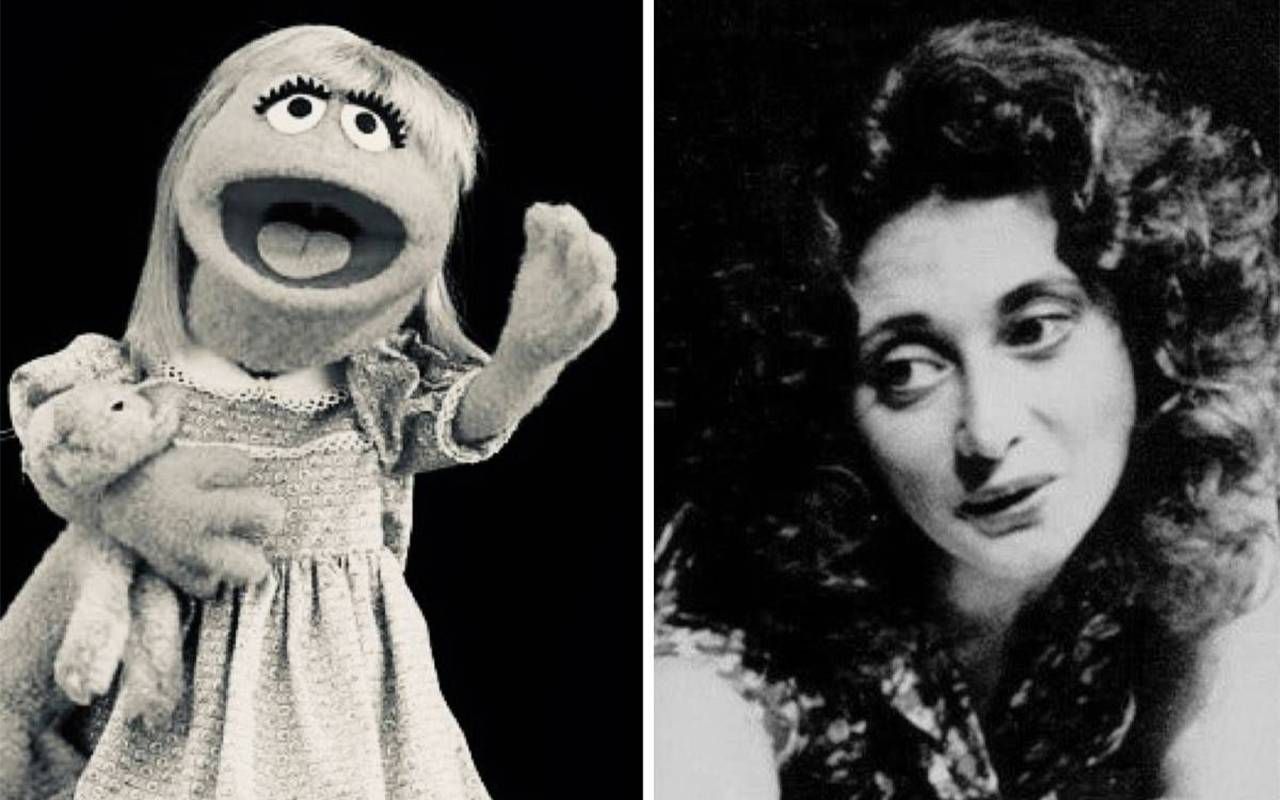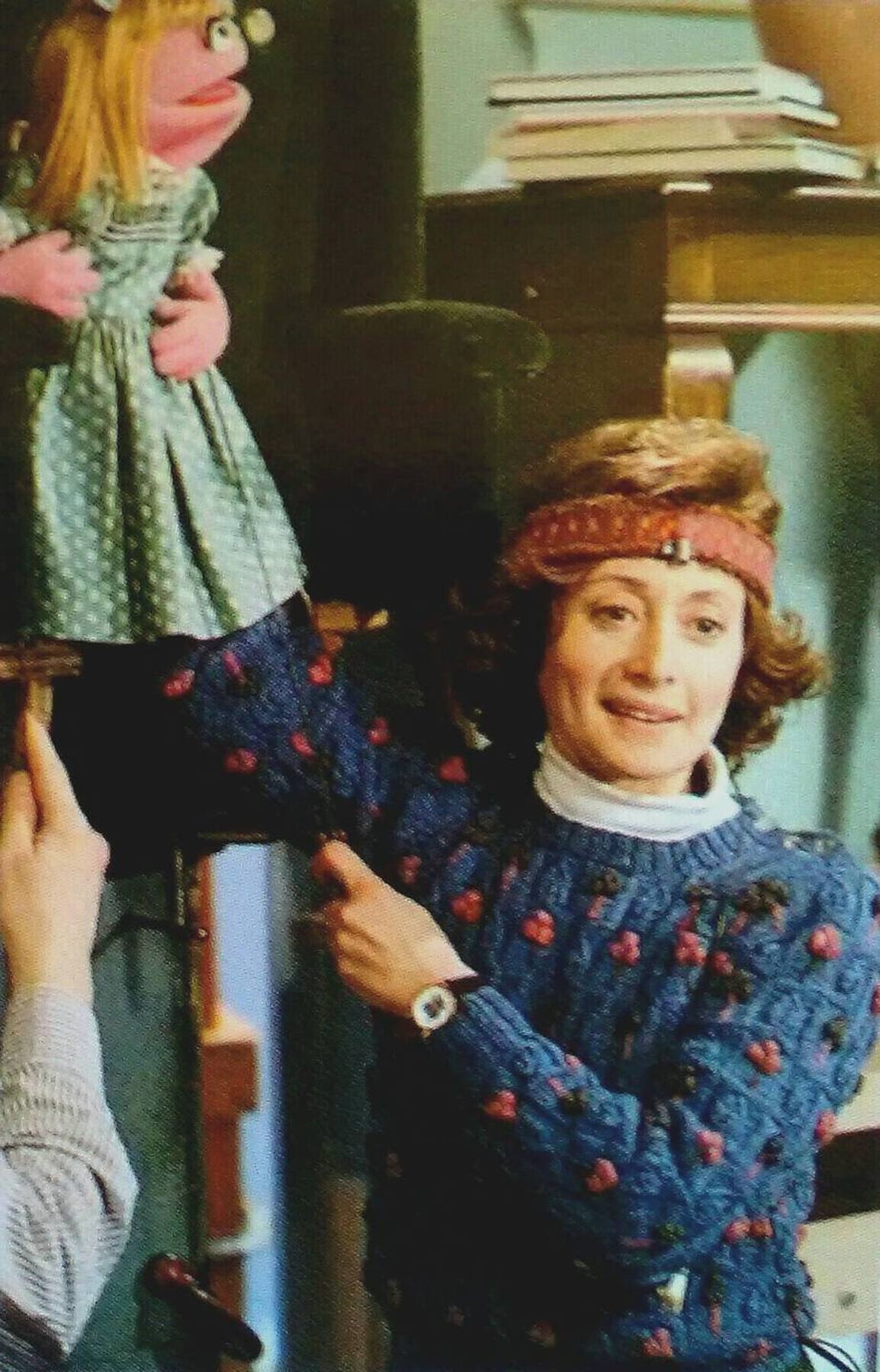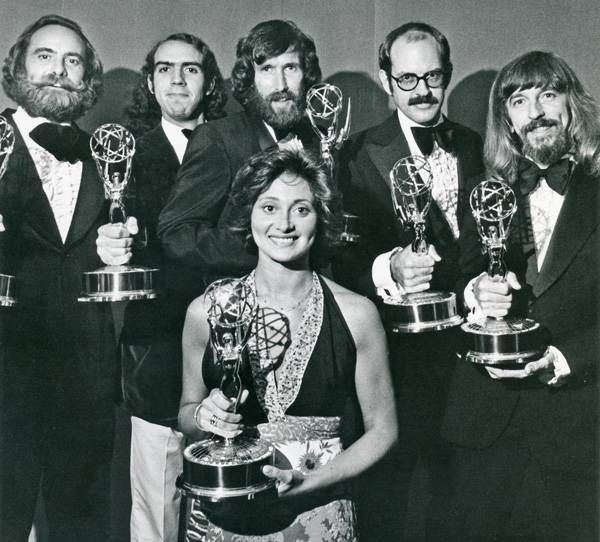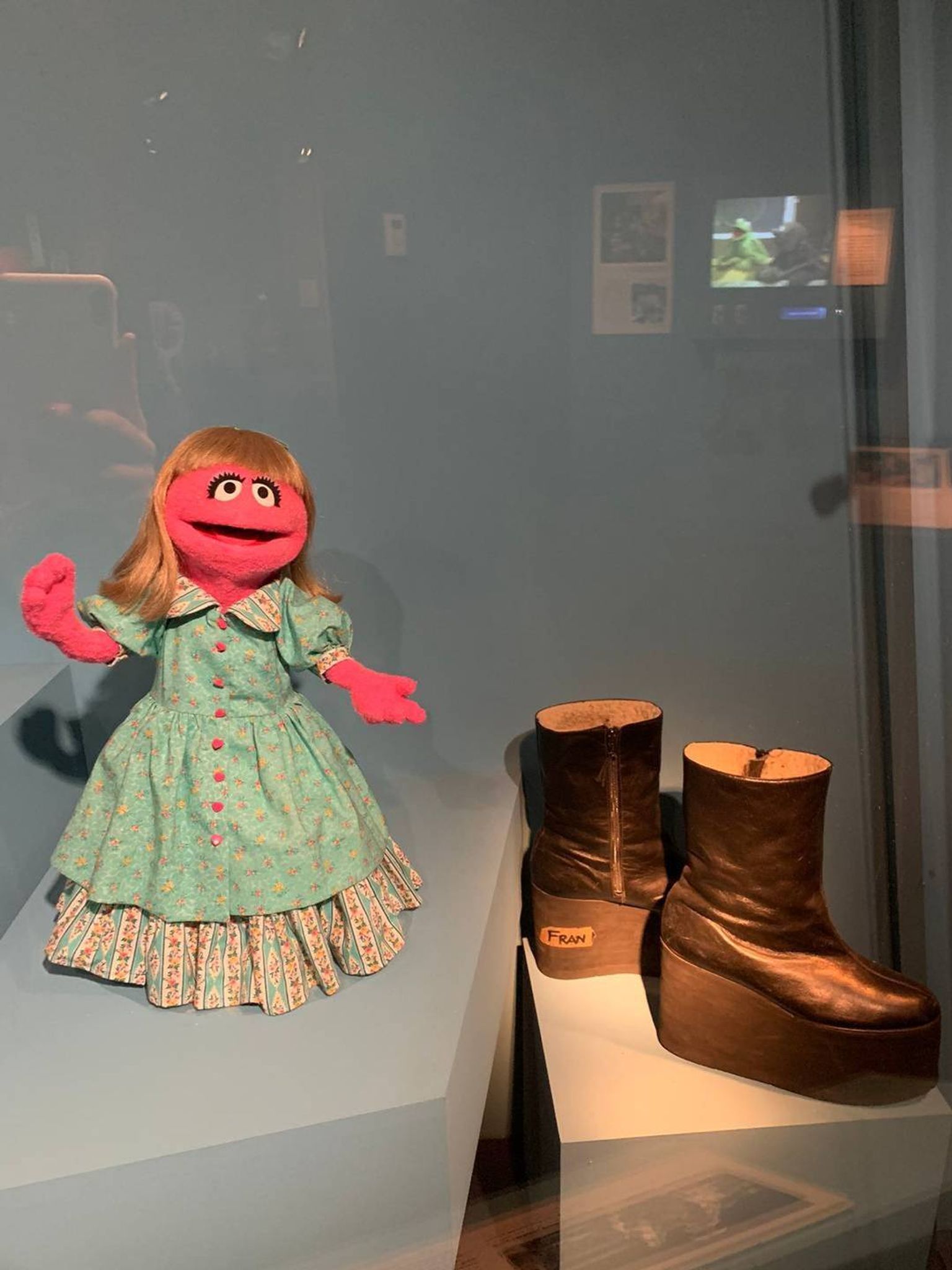The Surprising History of Sesame Street's Prairie Dawn
Jim Henson's first woman puppeteer, Fran Brill, candidly reflects on a rich career

Fran Brill never set out to play a Muppet; she just needed to pay the rent.
"I had no interest in puppeteering at all," the iconic Sesame Street performer — Jim Henson's first woman employee — said recently, "but I started doing voiceovers immediately when I got to New York. The first thing an agent said to me was, 'You know, you have a quirky voice.'"
In 1969, the 22-year-old actor made her Broadway debut in "Red, White, and Maddox," a musical satirizing the political career of Georgia governor Lester Maddox. The show opened in a blizzard, reviews were weak and after 41 performances, it closed.
"So, I got an apartment with some girl I didn't even know," Brill said. "A friend of a friend of a friend of a friend — you know how it goes. I thought, 'Oh, gosh. Well, I'm here, show closed, better earn some money.'"
Then, Brill spotted an ad in the paper from the Jim Henson Company seeking performers.
Brill spoke with us about her unexpected foray into puppetry and her 45-year career on Sesame Street, where she defined the characters so many of us grew up watching, including Prairie Dawn. The retired actor also recalled her exact words the first time Jim Henson coaxed her into slipping a puppet onto her arm (spoiler: "Oh, my God.").
What made you decide to go all-in as a puppeteer?
Jim Henson was looking to train puppeteers for an upcoming Ed Sullivan Christmas special. It was such a small company at the time, I got him on the phone.
I said, "Um, hi. I'm an actress. I thought I could maybe audition for some puppet voices."
And he said, "Well, we don't do it that way."
He said all the puppeteers did their own voices and manipulation, and I thought, "Oh gosh, I don't know."

I don't know what I thought, that there was somebody down on the floor somewhere doing the voices? That's extremely difficult, to have somebody manipulating.
Yeah! But you did it.
Well, it was all so extremely flukey. I went over, I had an appointment, and I came in — there was a black trunk full of puppets and a floor-to-ceiling mirror.
And there was Jim Henson, and Frank Oz (Cookie Monster, Bert, Grover). It was all terribly calm and didn't feel like an audition at all.
Jim was very easygoing, asking me a little bit about myself, and then he said (gesturing to a puppet), "Well, would you like to, you know, pop it on?"
And I thought, "Oh, my God. What am I doing?"
Then what?
I stuck it on my hand, and he said, "Have at it. Is there a voice or something you want to try?" So, I came up with the voice.
It really wasn't difficult for me just to come up with a voice because it's part of the actor's kit, being able to do voices.
So, we did that and then I would make an adjustment. He would say, "Raise your voice, try it lower." He just wanted to see how flexible I could be.
And then he had some scripts there, and we read through them — Jim, Frank and I. We laughed, improvised a little bit. It was really not a trying situation at all.
"It would never happen to anybody else again, that's for sure. They would never hire a nincompoop like me who had never ever played with a puppet"
So that was it?
I really didn't think they would call me again. I was an actress, I didn't have that much invested in it. I didn't really care that much but I hadn't paid the rent. So, I ended up doing it.
I took this workshop for two weeks where I learned how to puppeteer the Muppet way — which is lip-syncing. It's not just open mouth, close, open; it's very particular, very precise.
Then I worked on the Christmas special. At the end of that, Jim said to me, "Would you like to do Sesame Street this coming season?"
And I was just like, "Wuh-wuh-what?" I just, did not expect that at all.
I said, "Oh, gee, Jim, I don't know. I want my face to be seen, I'm an actress."
And he said, "Well, just try it out for a little while, see how you like it."
It all happened very quickly because they'd started season two. So that's how I got on Sesame Street.
Wow. I'm blown away.
It would never happen to anybody else again, that's for sure. They would never hire a nincompoop like me who had never ever played with a puppet.
But Jim taught himself how to puppeteer. He made his own puppets way back when television was created and decided he wanted to be a part of it. He knew that if he did it, I could do it, especially hanging around these other company puppeteers, who'd help me out. So, it was absolutely really crazy.
What were your earliest impressions of Jim Henson?
He certainly wasn't scary, that's for sure. He was just a very soft-spoken, mild-mannered man.
Jim was just superb at making everybody feel at ease, having a good time and playing well with others, ensuring that the crew was also part of the experience. And let's face it, Sesame Street was an experimental show back in those days. They were just figuring it out as they went along.

You were the first woman Jim Henson hired, apart from his wife, Jane. What was that experience like?
Well, you know, for the longest time it didn't really occur to me. Of course, I knew I was the only girl, but the guys were great. They were buddies — they were wonderful — to me.
I was apprehensive because they were all very good. It was Jerry Nelson (Count von Count), and Caroll Spinney (Big Bird), Jim and Frank. Then, I walk into this as a complete beginner, Puppetry 101.
I felt pressure to be excellent. I didn't want them to do take after take because I was messing up.
I realized the only way this was going to work was for me to be one of them. Not that I had to one of the guys, exactly. I had to stay true to who I was.
But I also had to be easygoing and if they ribbed me, or anything like that, I had to just play along and laugh it off. I guess that's what most women do when they're the only girl in the room? But they were great to me. They really were.
When I read about you, you're often described as a trailblazer, or a pioneer — a feminist inspiration.
(Laughs) That's cute. I don't feel like any of those things.
Tell me about your approach to creating and embodying Prairie Dawn.
For about six months, I had been working with Anything Muppets. Anything Muppets are girl Muppets whose eyes and nose and wig — anything — can be changed according to what the script is. She could be a princess. She could be a duck.
Then Jim came to me one day with this very small puppet.
He said, "We would like you to come up with a very sweet little girl."
They had no female characters unless the guys were doing falsetto voices, which were hysterically funny.
"Jim came to me one day with this very small puppet. He said, 'We would like you to come up with a very sweet little girl.'"
But because of the Women's Liberation movement, because there was an increasing awareness (around gender issues), they realized they needed, in all good conscience, to have a realistic female interpretation of a character.
So anyway, he came to me with this little puppet — the smallest puppet there was. They put her in a little girl's dress, with smocking. It was like a little party dress.
She already looked very sweet. She even carried a hanky way back when. So, I just went to the mirror, and I raised my voice (raises voice) up to here, and did this breathy, almost Marilyn Monroe voice. And it just came out.
I'm dying.
It was really sweet. She would play the piano for all the boys: Big Bird, Ernie, Cookie Monster, Grover, Harry Monster sometimes. She would put on these pageants — that was her hook at the time. She would play the piano very badly.
The boys were always goofing so she always had to correct them. She'd say, (in Prairie Dawn voice) "Oh, Bert, let's try this one more time." She was still sweet about it. It was really cute. I loved doing these. But her personality, she's changed over the years.
It seems like her look has changed, too.
Yeah, they changed her dress. There was a period where they put her in jeans and overalls, but it really took away from the fact that she was a girly girl. There's nothing wrong with being a girly girl. It's easy to confuse her with Betty Lou, who I also played. She had pigtails.
How did Betty Lou come about?
I have one answer for you: publishing. Artists were drawing this other little girl who looked remarkably like Prairie; she appeared in all these books they were making. I don't even remember what voice I had for her. Betty Lou was a little less precious than Prairie Dawn.
Last year I went to the Jim Henson exhibit at the Museum of the Moving Image, and saw these amazing custom-made boots that you wore on set — they say FRAN. Tell me about the boots, and where I can get replicas.
I'm 5'4" and Jim and Frank were 6'2" and 6'3", roughly. Jerry Nelson was right up there. So, here are all these tall men and little, shrimpy me!
The only way for me to work alongside them, with my hand up in the air, would be to raise me. I mean, what could they do? They couldn't crouch through every scene.

This is the way all problems were solved on Sesame Street: The problem would come up and then it was like, OK, how do we solve it?
This was one of the earliest problems: How do we get Fran to work alongside the guys?
So, the costumer sent me down to Bleecker street to get a pair of boots. Then they glued a platform onto them.
And that's what all the women have done now on Sesame Street, they have gone to buy a pair of boots or shoes, and then they have a six- to nine-inch plate added to the boot!
Wow.
But it was tricky because when we'd do choreography for a musical number, I had to wear these boots, of course, because I was maybe right-handing Jim Henson, who was so much taller than me.
I had to run around the stage floor with six to nine inches of height added, and in those days we had cables all over. It's good I had a dance background because I never fell, and I was really proud of that.
Being a Muppet requires way more physicality than I imagined.
You've got to keep your head out of the camera shot but keep the Muppet as high as you can. Somebody once drew the ideal picture of a puppeteer, and it's this small little head, with two arms raised up in a V. That doesn't exist unless you're a Martian!
But yeah, there were many times where the other puppeteers and I would have to lie down on this rolling platform. You know how with a lounge chair you can make the back go up and down? Okay, so you'd be on this lounge chair, and you're using your legs and feet to literally get across from 123 Sesame Street to Mr. Hooper's Store. If you lose sight of where you are, you're dead.
What were your favorite songs or skits to perform?
After 45 years? Oh, gosh. Maybe the ones they're reviving now. Like, "Who is this person in your neighborhood, in your neighborhood." That was a standard in the early days.
Which celebrities did you enjoy working with the most?
We had a great time with Beyoncé's group, Destiny's Child. Maya Angelou, who I knew very well and had read, was very impressive. She was warm and wonderful.
Everybody who comes on Sesame Street is great because they want to be there. The one person that will stick with me forever was Christopher Reeve, who played Superman.
He was in a wheelchair and very compromised. We'd been warned ahead of time not to touch him. We had to have a certain temperature in the studio for him. There was a sense of tension in the air. This was a show with Zoe, another character I played.
So we're all bustling around him getting into places, and he wheeled himself onto set — he blew into a straw-like device to mobilize his chair. His son was with him, too.
And then he said something just so funny and put everybody at ease, because he knew we'd been warned to be careful around him and wanted us to stop that.
He was just very smart. At one point I said to him, "Would it be okay if I sat Zoe in your lap, because that's when it really looks cute and close?" I knew it would be a much better shot if I sat her on his lap.
He said, "That's fine!" and so I sat Zoe in his lap. It was a charming script. It was a special day.
I read that when you retired you were gifted with your own Prairie Dawn puppet — that's so cute. And there's a Prairie Dawn at the Smithsonian!
Yes, she's having a great time. They rotate her and the other puppets. She has on a nightgown and a little kitten that she's holding.
She never actually had a kitten on the show, and at the Smithsonian, she's holding her in the most uncomfortable position. That was a stroke of genius by the museum or Bonnie Erickson, who posed her.
In addition to being a puppeteer, you are an accomplished, retired actor. What were some of your favorite roles?
My first love is acting, and theater specifically. I just love everything about the theater. One of my all-time favorite roles was Lily Bart in a dramatized version of "The House of Mirth" by Edith Wharton. It's just a great story and a great role, because Lily was elegant but born poor. I always wanted to do costume dramas.
"I'm still very close to everybody at Sesame Street."
When I retired, I really felt like I had my memorial, because they threw this massive party for me. I saw my entire career go by. They had clips from on-camera commercials I've done, from soap operas, everything. Since then, I've always referred to it as my memorial. I'm a lucky, lucky gal.
I am very grateful for the life and career that I've had. I'm still very close to everybody at Sesame Street. They will be part of my life forever. It's a family. I've just led the most wonderful life.

Sabrina Crews is a digital editor for Next Avenue and a former reporting fellow with the Robert N. Butler Columbia Aging Center and Columbia Journalism School. Read More

